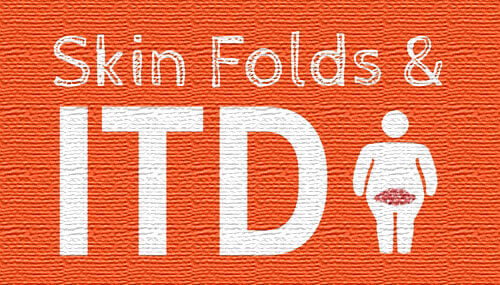How to identify and treat intertriginous dermatitis (ITD) within the skin folds among obese patients.
Statistics show that more than one in three adults in the U.S. are obese (BMI>30). Patients within this population often have skin folds in many areas of the body, especially under the arms, in the groin, under the breasts, and beneath the panniculus – an overhanging “apron” of skin and fatty tissue in the lower abdomen. As a result, this population is more likely to experience a common inflammatory condition called intertriginous dermatitis (ITD) – also known as intertrigo. But what exactly causes ITD, and what are the best ways to treat it?
Perfect Conditions for ITD
Obese patients tend to perspire a great deal. As body mass continues to grow, the percentage of surface skin area is unable to keep up the pace and the body’s natural cooling system and needs to work overtime.
Within skin folds, a lack of air circulation means that perspiration doesn’t evaporate, leading to moisture buildup. Thus, conditions are ripe for ITD:
- Excess moisture causes dead cells in the uppermost layer of the skin (the stratum corneum) to puff up and become rougher in texture.
- Added weight of the skin fold itself (with skin moving upon skin) creates friction between the opposing skin surfaces.
- Friction is magnified because the saturated, rougher-textured skin doesn’t glide as smoothly.
In short, ITD occurs because of the combination of moisture plus friction.
How to Identify ITD
As with other forms of Moisture Associated Skin Damage (MASD), accurate identification is critical in order to choose appropriate treatment. What should you look for? Here are the characteristics of ITD:
- Located within the skin folds
- Distributed in a linear, mirror image on each side of the skin fold
- Partial thickness
- Mild erythema (redness) that can quickly progress to erosion, oozing, maceration or crusting
- Possible pain, burning, itching and odor
Intertriginous Dermatitis (ITD) Treatment
To manage ITD in the skin fold, you’ll need something to absorb the moisture and keep the area dry. This could include soft, absorbent pads or non-occlusive, high air-flow incontinence pads. There are also specialty products available, such as InterDry® by Coloplast™, a textile that can be placed in the fold with a minimum of 2 inches of excess extending outside the fold. This serves to wick the moisture from within the skin fold to the outside area. Simultaneously, the soft knitted polyester fabric cuts down on friction. It’s also impregnated with silver to manage any fungal or bacterial issues.
If you don’t have access to state-of-the-art products, you may use materials such as gauze, towels or pillowcases. But note, it is not recommended, as these materials absorb fluid but do not allow for evaporation. If used, you will need to change these materials much more frequently.
Keeping Skin Folds Clean
When treating skin folds and ITD, beware of outdated remedies that only make the problem worse, like talc or cornstarch, for example. They can cake, cause skin to break down, and facilitate fungal growth – another common condition within skin folds.
Finally, be sure to wash the affected skin with pH-balanced cleansers and avoid harsh scrubbing. Hand-held showerheads are recommended, as they are good for low or hard-to-reach areas. Instruct the patient to be extra-gentle with their skin, since their first instinct might be to use harsh soaps and rough treatment to combat the condition.
What Do You Think?
Do you have personal experience with treating skin folds and ITD in bariatric patients? What are some of the most common challenges to this type of wound care, and do you have any specific stories or examples you’d like to share? We’d appreciate hearing about them – please leave your comments below.
Wound Care Education Institute® provides online and onsite courses in the fields of Skin and Wound, Diabetic and Ostomy Management. Health care professionals who meet the eligibility requirements may sit for the prestigious WCC®, DWC® and OMS national board certification examinations through the National Alliance of Wound Care and Ostomy® (NAWCO®). For more information see wcei.net.
What do you think?

